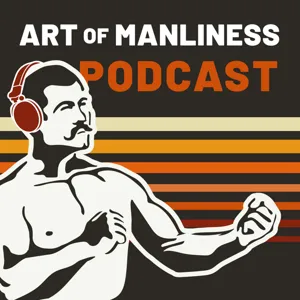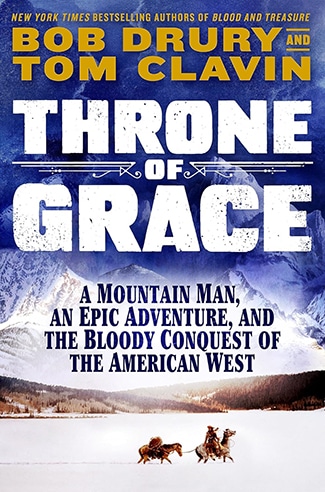Podcast Summary
The Five Priorities of Short-Term Survival: Learn first aid basics, build a shelter, start a fire, purify water, and carry a versatile survival knife for a safe and comfortable wilderness experience
With the right skills and gear, even a short-term survival situation in the wild can be turned into a safe and comfortable experience. Dave Canterbury, an expert in bushcraft and survival skills, shared his knowledge on the Art of Manliness podcast about the five priorities of short-term survival. He emphasized the importance of knowing first aid basics, building a proper shelter, starting a fire effectively, purifying water safely, and having a versatile survival knife. Canterbury, who started teaching survival skills after gaining interest through 18th-century reenacting and YouTube, now runs the Pathfinder School where he teaches these skills in person to a diverse range of students, from civilians to military personnel and government agencies.
Learning survival skills boosts confidence and self-reliance: Learning survival skills enhances confidence, prepares for emergencies, and focuses on essential priorities: self-aid, fire, shelter, water, and signaling.
Learning survival skills not only helps people prepare for potential emergencies but also boosts their confidence and sense of self-reliance. During survival classes, students often start off feeling intimidated and overwhelmed, but as they repetitively learn and practice the skills, they become more comfortable and capable. The EDI methodology of educate, demonstrate, imitate, helps students build on each other to accomplish multiple tasks efficiently. The mental aspect of survival is crucial, and gaining the ability to navigate and survive without modern conveniences is a significant confidence booster. The Five by Five Survival System, outlined in the Bushcraft Essentials Field Guide, emphasizes five priorities in a survival situation: self-aid, fire, shelter, water, and signaling. By focusing on these essentials, individuals can increase their chances of survival and thrive in unexpected outdoor situations.
Preparing for common outdoor injuries: Carry a tourniquet, pressure dressings, blood clotting agents, and isolating tools for major bleeding. Practice using a tourniquet and know temporary solutions for minor injuries until professional help arrives.
Being prepared for common outdoor injuries is crucial for a safe adventure. The most common injuries include bleeding, breaks, sprains, strains, blisters, burns, bites, and stings. To address these injuries effectively, it's essential to prioritize stopping major bleeding with a tourniquet and pressure dressings. Other essential items for an individual first aid kit include blood clotting agents and isolating tools. Practicing using a tourniquet and carrying it at close proximity is vital, as time is crucial in emergency situations. Additionally, understanding stop-gap mechanisms like belts or shirts can serve as temporary solutions until proper medical assistance arrives. While medicinal herbs and plants can be beneficial, they should not replace proper first aid training and supplies.
Trees and Plants in the Wilderness have Multiple Purposes: Trees and plants in the wilderness offer medicinal benefits, serve as sources of shelter, and can be used for firewood and food.
Trees and plants in the wilderness can serve multiple purposes beyond just being sources of firewood or food. They have medicinal properties that can help address various health issues, from stopping bleeding to soothing an upset stomach or even treating burns. For instance, pine trees are not only useful as an accelerant for fire but also have antiseptic and antibacterial sap that can be used to pack injuries or protect large abrasions. White oak trees, which were considered a symbol of material medica in Europe, have inner bark that can be used to address various health issues from the neck up, such as sore throats. Learning to use trees and plants for medicinal purposes requires expert guidance and hands-on experience, making formal training valuable in reducing the learning curve and ensuring accuracy. Shelter is the next priority in survival systems, as clothing acts as the first line of defense against the elements, and building a shelter comes before starting a fire.
Essentials for Survival: Clothing and Shelter: Having appropriate clothing and a proper shelter with insulation for sleeping is crucial for survival in various environments. Invest in good-quality gear for protection against the elements.
Clothing and proper shelter are essential for survival in various environments. Clothing is crucial for protection against the elements, and it's important to have appropriate clothing for the specific environment. Shelters, on the other hand, require more than just a tarp or a space blanket. A proper shelter includes three main elements: something to sleep in, something to sleep on, and something to sleep under. When it comes to insulation for sleeping on the ground, options include carrying a sleeping bag, a bivvy bag, or even a large contractor trash bag for emergency situations. It's also important to note that the quality of gear matters, such as investing in a good-quality space blanket instead of a cheap one. Overall, being prepared for various weather conditions and having the necessary clothing and shelter can make a significant difference in survival situations.
Essential Survival Tools: Shelters and Fires: In survival situations, having a shelter and the ability to start a fire are crucial for warmth, water disinfection, signaling, and addressing medical needs. A reusable emergency blanket and more complex shelters offer protection, while fire starting skills are vital.
Having a robust emergency shelter and the ability to start a fire are essential for survival situations, even in warm climates. A reusable emergency space blanket can serve as a versatile tool for various shelter needs, while more complex shelters like lean-tos, plot points, flies, raised beds, and A-frames can provide additional protection. Fire is crucial for water disinfection, signaling for rescue, keeping warm, and addressing various medical needs. Having the ability to start a fire on short notice is vital for survival. Shelters and fires are two priority areas for any survival kit.
Simple fire-starting with small sticks and char: A small pile of dry sticks and char can start a fire quickly. Reliable tools like a big lighter and ferrocerium rod are preferred.
Starting a fire in a survival situation doesn't require a complex firelay or specialized tools. A simple pile of small, dry sticks can be enough to get a fire going quickly, as long as there's enough airspace for the fire to breathe. My preferred fire-starting tools are a big lighter and a ferrocerium rod due to their reliability and longevity. Char, which is carbonized natural material, is an underrated fire-starting resource that can be made from various materials and can be used to create a live ember with a low temperature spark. While techniques like using a bow drill have educational value, they may not be the most practical option for a survival situation.
Staying hydrated in the wild: Humans can survive without water for only a few days, so it's crucial to drink water frequently to avoid dehydration. Plan to drink water at every opportunity and practice basic navigation skills to ensure survival in the wild.
Hydration is a crucial element of survival in the wild, and it's essential to drink water frequently to avoid dehydration. The rule of thumb is that humans can survive without water for three days, but this can be significantly reduced depending on various factors such as heat, exercise, and initial hydration levels. The biggest issue with hydration in the wild is often not the availability of water but rather people forgetting to drink enough. To ensure adequate hydration, it's recommended to plan to drink water at every opportunity, whether by boiling it or using a water filter. Additionally, basic navigation skills, such as using a compass to walk a straight line, are essential for survival in the wild. Remember, the ability to navigate is a skill that requires practice, so it's essential to learn and apply these skills in real-life situations.
Mastering essential skills for survival: Focus on navigation, signaling, self-aid, shelter, fire, and hydration for initial 72 hours, as food is not a priority.
Having the right tools and understanding their use can make a significant difference in survival situations. The discussion highlights the importance of mastering navigation skills using a compass and bearing, as well as carrying effective signaling devices like a mirror and orange clothing or gear. Food is not a priority in the initial 72-hour survival scenario as most people have enough food stored in their bodies. Instead, focus on mastering essential skills like self-aid, shelter, fire, hydration, navigation, and signaling. Remember, survival is not about long-term living off the land but rather handling immediate needs until help arrives.
The 5 C's of Essential Survival Gear: Focus on cutting tools, combustion devices, cover elements, containers, and cordage for essential survival gear. These items can fit into a 10-liter dry bag or day pack.
For essential survival gear, you should focus on the five C's: cutting tools, combustion devices, cover elements, containers, and cordage. A cutting tool can include a folding saw, belt knife, and pocket knife. Combustion devices are items used to start a fire, such as matches, lighters, or flint and steel. Cover elements provide shelter and protection from the elements, like a tarp or waterproof cover. Containers should be metal, single-walled, and fire-resistant, and cordage is used for tying, lashing, and binding. These items, though numerous, can fit into a 10-liter dry bag or day pack. A good survival knife should be full tang, robust, and versatile, capable of both heavy-duty tasks and fine carving. These principles, while seemingly extensive, can ensure readiness for various survival situations.
Survival Knife Essentials: A carbon steel belt knife with a simple grind, around 4-5 inches long, and essential knife skills like cutting trees, making fire, carving, and basic knots, can help in survival situations.
For a survival situation, a belt knife should be made of carbon steel for easy sharpening and multi-functionality, have a simple grind for ease of use, and be around four to five inches in length for processing small trees and creating firewood. Additionally, essential knife skills include cutting down small trees, making fire with the knife's spine, carving, and knowing how to use a knife as a flint and steel device. Basic knots for survival include a slip knot, half-hitch, bowline, and fisherman's knot, as well as understanding how to make a prussic hitch. These skills can be practiced in urban areas, such as parks or backyards, with the exception of navigation which may require a larger area.
Exploring the World of Bushcraft with Dave Canterbury: Learn bushcraft skills from expert Dave Canterbury, including shelter building, fire making, and foraging, through his book and resources.
If you're interested in learning more about Dave Canterbury, the author of "The Bushcraft Essentials Field Guide," the best place to find all the relevant links is on his Instagram account, @pathfinder survival. His link tree there provides access to his website, school, Amazon author and influencer pages, Facebook, YouTube, and Twitter. The book is available at Amazon.com and in bookstores. For more resources and deeper exploration of the topic, check out our show notes at aom.is/survival. Don't forget to support us by signing up for Stitcher Premium using the code MANLY for a free month trial and enjoy ad-free episodes of the A1 Podcast. And remember, as Brett McKay always says, put what you've heard into action. Thanks for listening!











